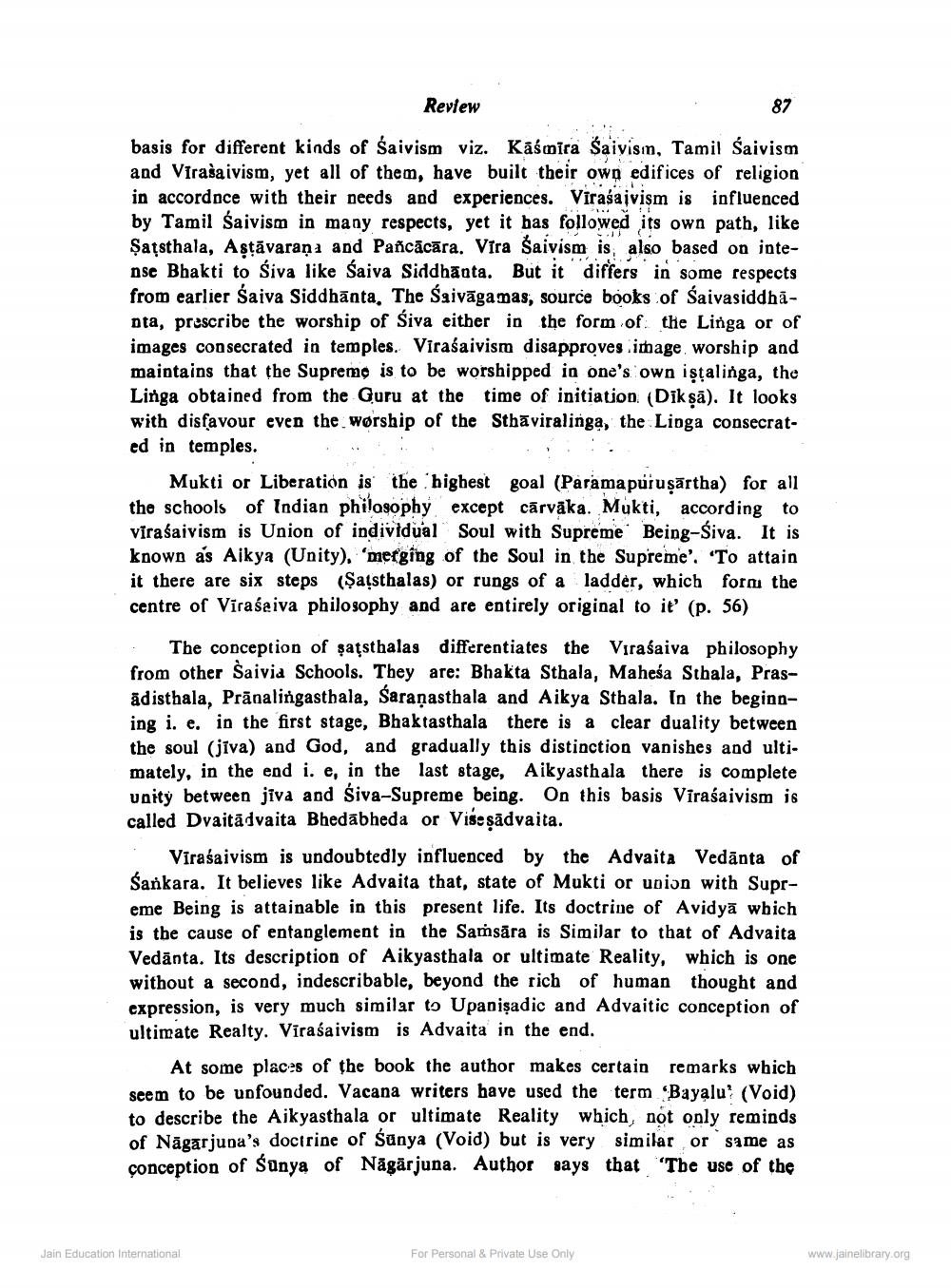________________
Review
basis for different kinds of saivism viz. Kasmira Saivism, Tamil Saivism and Virasaivism, yet all of them, have built their own edifices of religion in accordace with their needs and experiences. Virasaivism is influenced by Tamil saivism in many respects, yet it has followed its own path, like Şațsthala, Astāvarana and Pancācāra. Vira Saivism is also based on intense Bhakti to Śiva like Śaiva Siddhāata. But it differs in some respects from earlier Saiva Siddhānta. The Saivāgamas, source books of Saivasiddhanta, prescribe the worship of Śiva either in the form of the Linga or of images consecrated in temples. Virasaivism disapproves image, worship and maintains that the Supreme is to be worshipped in one's own işgalinga, the Linga obtained from the Guru at the time of initiation (Dik sā). It looks with disfavour even the worship of the Sthā viralinga, the Linga consecrated in temples.
Mukti or Liberation is the highest goal (Paramapuruşārtha) for all the schools of Indian philosophy, except cārvāka. Mukti, according to virasaivism is Union of individual Soul with Supreme Being-siva. It is known as Aikya (Unity), 'metging of the Soul in the Supreme'. 'To attain it there are six steps (Sațsthalas) or rungs of a ladder, which form the centre of Viraśaiva philosophy and are entirely original to it' (p. 56)
• The conception of șațsthalas differentiates the Viraśaiva philosophy from other Saivia Schools. They are: Bhakta Sthala, Mahesa Sthala, Prasadisthala, Prānalingasthala, Saraṇasthala and Aikya Sthala. In the beginning i. e. in the first stage, Bhaktasthala there is a clear duality between the soul (jiva) and God, and gradually this distinction vanishes and ultimately, in the end i. e, in the last stage, Aikyasthala there is complete vnity between jiva and Siva-Supreme being. On this basis Virasaivism is called Dvaitādvaita Bhedābheda or Vise şādvaita.
Virasaivism is undoubtedly influenced by the Advaita Vedānta of Sankara. It believes like Advaita that, state of Mukti or union with Supreme Being is attainable in this present life. Its doctrine of Avidyā which is the cause of entanglement in the Samsāra is similar to that of Advaita Vedānta. Its description of Aikyasthala or ultimate Reality, which is one without a second, indescribable, beyond the rich of human thought and expression, is very much similar to Upanişadic and Advaitic conception of ultimate Realty. Virasaivism is Advaita in the end.
At some places of the book the author makes certain remarks which seem to be unfounded. Vacana writers have used the term "Bayalu? (Void) to describe the Aikyasthala or ultimate Reality which, not only reminds of Nāgarjuna's doctrine of śünya (Void) but is very similar or same as conception of Sunya of Nägärjuna. Author says that "The use of the
Jain Education International
For Personal & Private Use Only
www.jainelibrary.org




